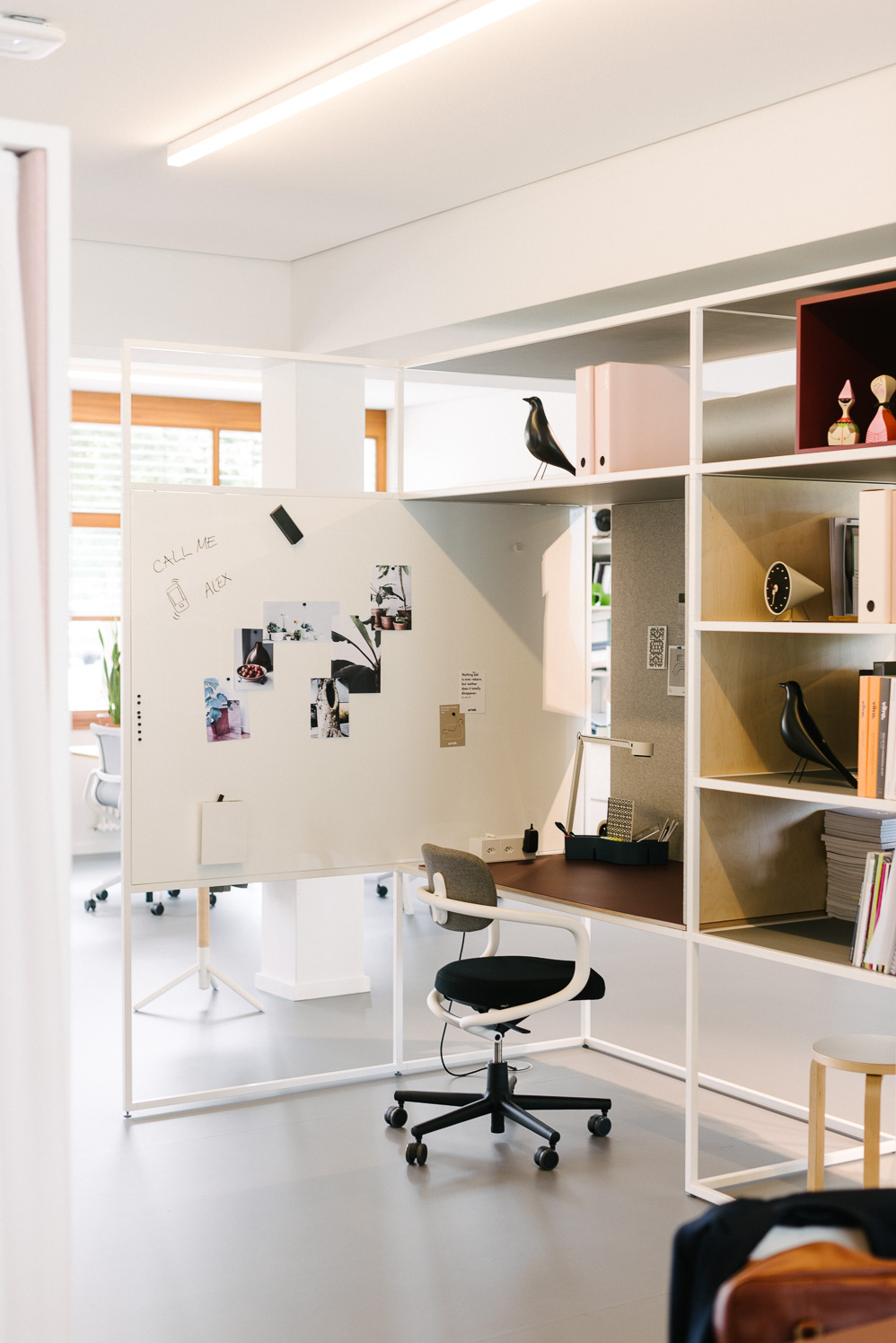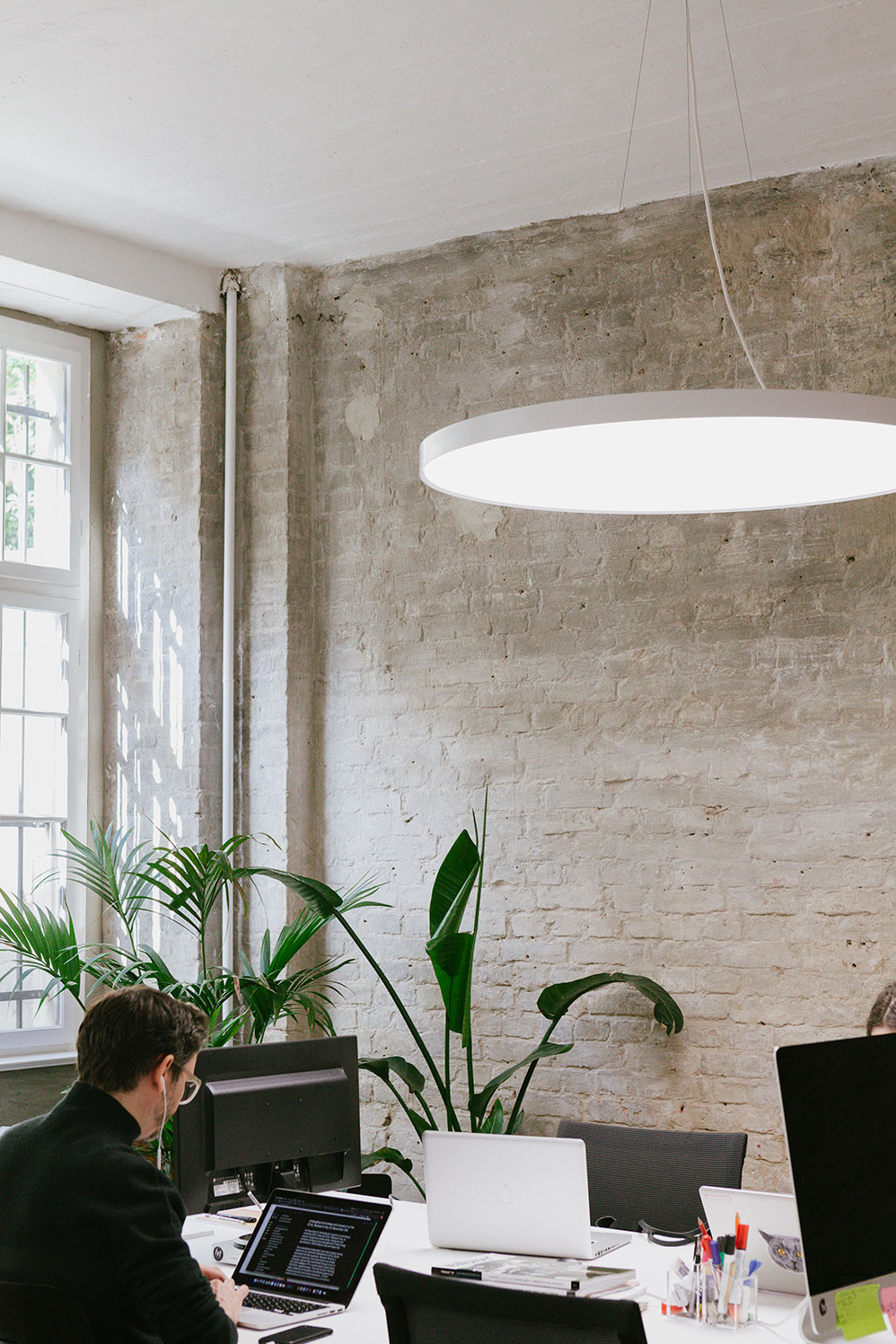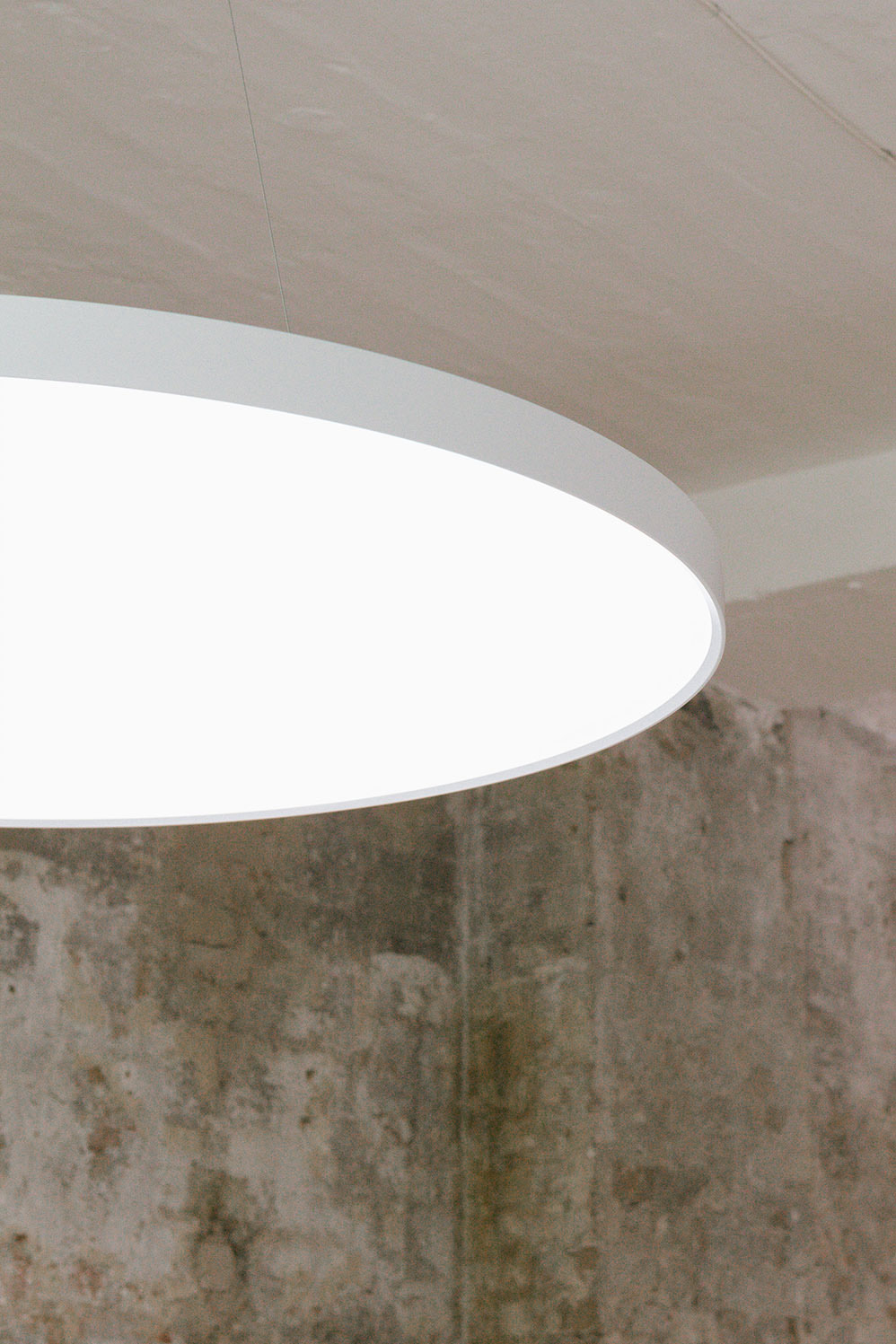What will our workspaces look like in five, ten, or fifteen years? We spoke to four experts to find out more about the design trends currently revolutionizing the world of work.
Spread across five floors totaling 14,000 square meters, the Factory Berlin, Görlitzer Park campus not only boasts multiple community spaces, telephone booths, and meeting areas, but also a cinema, a meditation room and a ball pit. It is, in essence, everything you would expect from a company that prides itself on being “Europe’s largest club for startups”—just don’t call it a coworking space.
“Coworking simply provides you with a space. What we offer at Factory Berlin is 365 days of curation,” says CIO Martin Eyerer, referring to the over 300 events they offer free of charge every year to their 3,000 members. From workshops and hackathons, to talks and pitch opportunities, this ever-expanding program is not treated as an afterthought, but rather as part of the company’s DNA. “Factory Berlin realized very early on that if we wanted collaboration and exchange we had to build a community,” Eyerer explains. The results speak for themselves: last year 60% of the startups that were launched in the city were founded in one of Factory Berlin’s two locations.




“For a lot of companies, after productivity the second most important thing for them is that people are able to be creative.”
Invigorated by this success, Factory Berlin recently launched The Creative Code, a project helmed by Eyerer that takes the company’s interest in creativity in the workplace to the next level. Combining a recording studio and more traditional areas for artists to paint and make sculptures, the space is an extension of the community areas and will also be the headquarters of a new residency planned for digital artists. By encouraging collaboration between multiple disciplines, Factory Berlin aims to foster mutual inspiration and innovation. “Running this program now for a year, we realized that this is the future of work,” says Eyerer. “These days young people already grow up with the awareness that being creative is something that they want in their lives. We believe that in a later stage if companies really want to attract talent they will need this mix in their community.”
A curated program of events is part of Factory Berlin’s mission to bring their members together.
Daniel Leiter, a trained architect, designer, and the Lighting Application Manager for Austrian brand Zumtobel, agrees. “Creativity is the key word nowadays,” he says. “For a lot of companies, after productivity the second most important thing for them is that people are able to be creative.” Citing the Google and Facebook campuses as the driving force behind this change, Leiter has seen how the influence of Silicon Valley has been the death knell for traditional office cubicles. “We’ve all seen these very ugly pictures of 1,000 tiny cells each with an employee behind a computer,” he jokes. “Well, if you sit in this box with your screen in front of you for eight hours, it’s very unlikely you’re going to have a creative idea.”
As a result, he’s seen how standardized workspaces have transformed into more flexible, sociable ones that encourage collaboration and adapt to different tasks that a modern employee might have to undertake. “So I have a desk where I would sit, for example, but I also have a meeting area where there is a sofa, and then I might have some high tables too or whatever combination of outfit and tailor fit lighting quality is necessary so that I can actually perform better in the task that I want to do.” Beyond the documented health benefits of optimized lighting, not to mention the boost in productivity it encourages, Leiter has also seen how lighting can be a way of being able to easily create spaces that are adaptable even if you don’t have thousands of square meters to play with. “Let’s say you’re a startup and you only have one room, it can still be very comfortable because you can easily adapt the room atmosphere for working, parties, or a presentation—three different scenarios created by light with just the touch of a button.


“I think today’s office is about diversity and hybridity,” adds Berlin-based industrial designer Konstantin Grcic. “The challenge and opportunity of this super flexibility is that an office is no longer a fixed layout of furniture and functions but a very open structure, able to adapt and to change, and to adapt back to something else again.” As a designer, he sees furniture as a vital component to this contemporary understanding of office spaces, noting that whereas in the past the trend was for ’60s modular furniture—“there would be two types of chair: one with an armrest and one without”—offices now need to feature a whole host of different types of furnishings to get the most productivity out of their employees. “Some people have a job where they need to sit down at a desk for nine hours whereas someone else may only sit down for half an hour at most before going to make a call or attend a meeting.” The challenge, he says, is to “create harmony” between all these diverse elements in order to end up with an office that “looks good and isn’t just a wild collage of different things.”
While OMA Architect Katrin Betschinger has also noticed that contemporary office spaces are no longer as static as they used to be, she has also seen that, on the flip side, employees have become much more solitary through their use of technology. “Sometimes people within the office are very isolated because they are sitting behind the desk with their headphones on and are not really seeing what’s happening around them,” she says. As the lead on the new office building for the Axel Springer publishing company, Katrin Betschinger and her colleagues have put these observations to good use by making the focus of the building an impressive terrace landscape intended for employees to come together. “It’s a little bit of a stage where they can present themselves and what they are doing,” she says. Alongside that they have placed more typical office spaces and meeting spaces, “so the building is taking care of any type of work that you might need to do.”


Beyond communication, Betschinger, too, sees flexibility as a key feature of the office space of the future. “I think more and more the office needs to constantly adapt,” she muses. “Perhaps this has always been the case but now it feels like the speed just keeps getting faster and faster.”
This essay is part of our content collaboration with Austrian lighting design company Zumtobel that illuminates how light inspires art, design, and architecture. See our past explorations here and stay tuned for future ones. A long-standing Friends of Friends partner, Zumtobel also contributed to the furnishing concept of the FvF Friends Space.
Text: Chloe Stead

